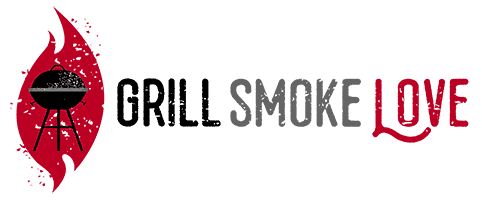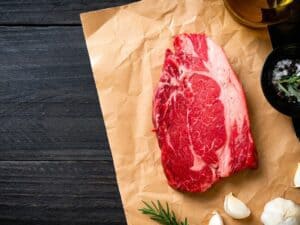Nothing is fundamentally more satisfying to cook on the grill than steak. It looks like grilling, it smells like grilling, and it tastes like grilling.
So you march to your local meat monger, ready to get some perfect cuts. What do you choose?
If you don’t already have a favorite target in mind, the choices are daunting. And even if you have a favorite, at some point, you’ll want to branch out and try something new.
I created this beef cuts guide to provide basic information about different parts of the animal and how to cook them right.
The trick is to know a little bit about beef and how it gets divided up. Getting familiar with the basic cuts is the starting point, as is knowing the qualities that make one cut right for grilling while another is better for smoking or braising.
For a quick summary, take a look at the infographic below with fundamental information about beef cuts:

Basics of Beef Cuts
There are many types of beef cuts available, each with its own name making it a confusing endeavor for the home cook to get precisely what they want.
Cuts are sized down in three stages, from large primal cuts to smaller food-service or “subprimal” cuts, and finally to the retail cuts that we find at our market.
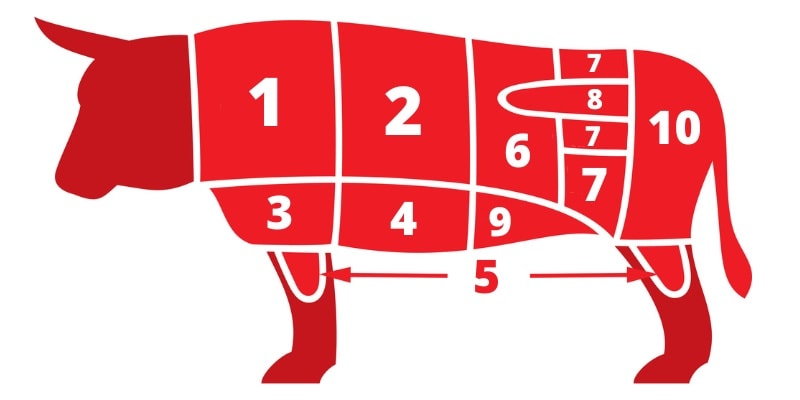
Understanding a little bit about the animal that the cuts come from and the various parts of its body can help you to prepare it appropriately.
If you know that a cut will tend to be tough, you can prepare it by cooking it slowly and with a lot of moisture.
This is also true for parts of the animal with a lot of connective tissues, like those that come from around the ribs.
Braising and smoking are great cooking techniques that use low heat and lots of moisture. It breaks down the tissue over time and tenderizes it.
Lean cuts that are already tender are for fast high-heat cooking.
They don’t need to be broken down to be eaten, so grilling or broiling are great options.
Fatty cuts are the most flavorful, so marbling is commonly considered a good quality when shopping for meat. The more evenly that fat is distributed throughout the cut, the more flavorful it will be. Another factor that affects marbling is the breed of a cow. For example, Angus beef is generally better marbled than most breeds of cattle.
Beef Cuts Guide and How to Cook Them
The basic primal cuts include chuck, rib, shank, brisket, plate, sirloin, flank, and round. Common retail cuts like T-bone and ribeye steaks, chuck roast, filet mignon, and short ribs are made from these areas.
Yet, there are some fuzzy lines here and there – some things vary a little from butcher to butcher and between different countries.
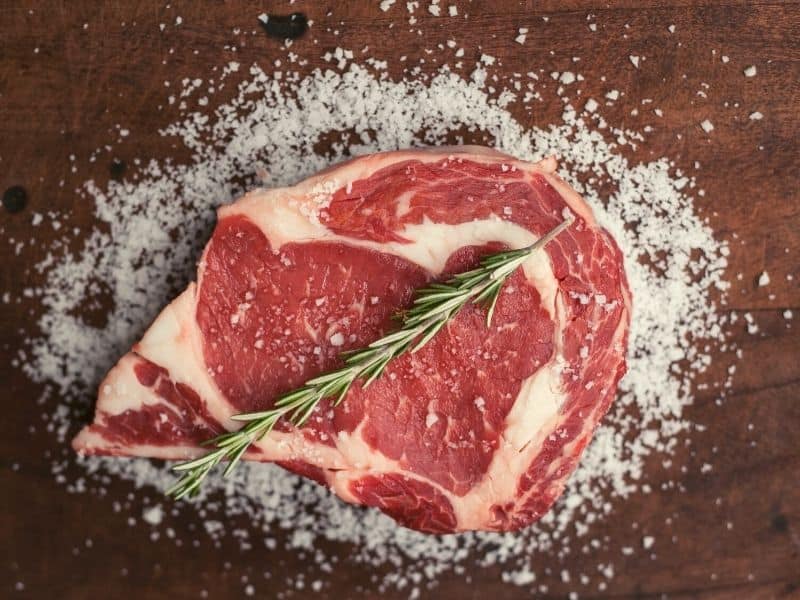
Many smaller cuts from other primal cuts can be made into flat steaks or thick roasts. Steaks are cut to be fast cooking, so they’re best reserved for parts with less connective tissue and sinew.
Roasts are bigger and therefore take longer to cook. For a little extra confusion, the animal’s ribs cover several primal cuts. So it is possible to have rib meat from the chuck, rib, or plate areas.
Each area of the animal can be generalized into how much exercise it had to make lean muscle.
Legs, thighs, and shoulders get a lot of work, so the meat tends to be tougher. The back area gets the least work, and so this is where the tenderest cuts come from.
Forequarter Cuts
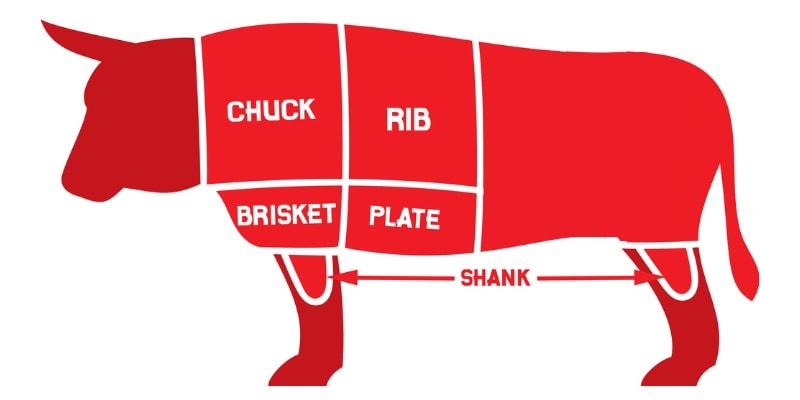
1. Beef Chuck
The chuck primal cut is located in the upper front shoulder of the animal. It’s the largest and most heavily used muscle group.
Beef chuck has a lot of connective tissue and is very flavorful.
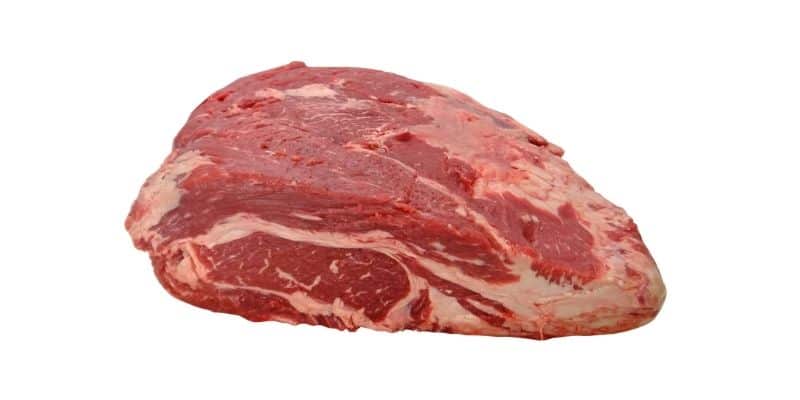
It’s good in stews or pot roasts – applications where the meat will be braised to break down all of that connective tissue slowly. And since it is also relatively high in fat, ground chuck is often a favorite for making burgers.
Flat iron steak and Denver steak both come from the chuck. These are more tender and well-marbled areas of the shoulder that have a lot of flavor, and they can be grilled quickly since they’re only about half an inch thick.
Country-style ribs are popular boneless chuck cuts that are best done in a slow cooker and finished on the grill.
2. Beef Rib
Beef rib cuts technically come from between the sixth and twelfth ribs.
It is a cut that is already tender, meaning that it can be cooked dry and remain tender.

It’s used for things like prime ribs and ribeye steaks. The lower part of the rib is cut differently depending on the butcher.
Sometimes included in the plate cut, the lower part of the actual ribs makes short ribs.
The most popular cuts from the rib primal are the ribeye cap steak, ribeye filet, ribeye roast, and back ribs. Ribeye steak is one of the most flavorful cuts; many people even prefer its flavor over a filet mignon.
Ribeyes are excellent pan-fried or grilled, but due to the high fat content, you need to be careful of flare-ups. You can use an infrared grill for great sear and less flare-ups.
3. Beef Brisket
Brisket is the primal cut directly below the chuck, located around the cow’s breastbone.
It’s as flavorful as it is tough, so it needs the right kind of cooking to make it the best.
Low and slow cooking breaks down this chewy muscle, which also imparts wonderful flavor since this meat is well marbled and fatty. Braising or smoking are great options.
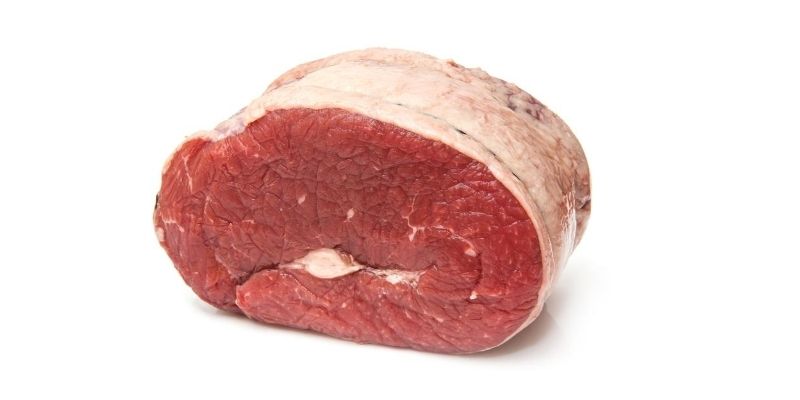
This area is where corned beef, many pot roasts, and barbecue brisket come from.
The brisket is divided into two parts. The brisket flat is leaner than the brisket point.
Choose your cut based on your cooking method – if you’re braising or stewing with extra fat, the brisket flat will work well. Whichever you choose, don’t let it dry out.

So now your mouth is already watering and you want to try cooking some smoked brisket?
Try this excellent recipe for Texas-style BBQ Beef Brisket.
4. Beef Plate
Below the rib comes the plate primal. This area is where skirt steak and plate ribs are located.
There’s a lot of cartilage here, meaning that braising or smoking are the best options for breaking down the coarse muscle fibers.
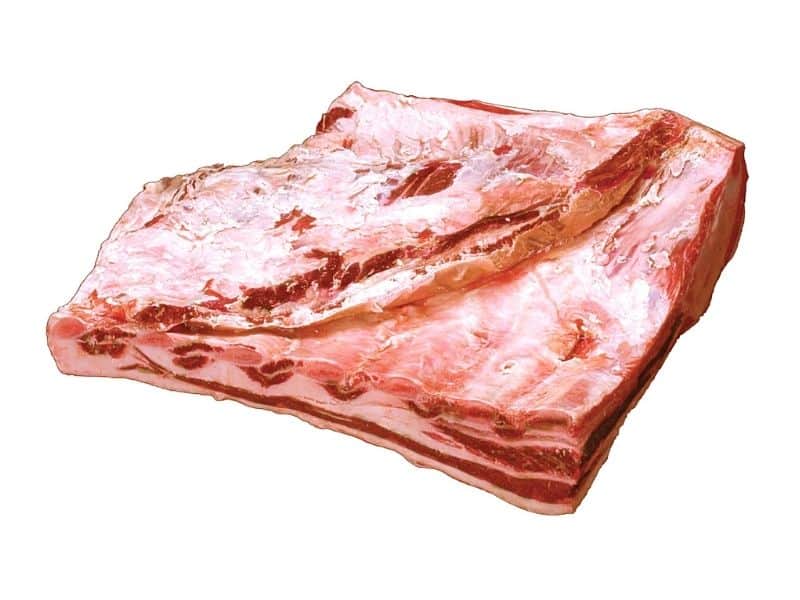
Plate short ribs are tough and fatty, so like most rib dishes, they’re best cooked over low heat for a long time. If you plan on braising them, it’s always best to get bone-in ribs for more flavor.
Skirt steak is a popular cut from this area and it can be cooked in the grill or a pan and then sliced thin.
5. Beef Shank
Beef shank is the cow’s thigh, and it comes from the front and back legs.
It’s tough, with lots of connective tissues, so it’s best cooked extremely slowly.
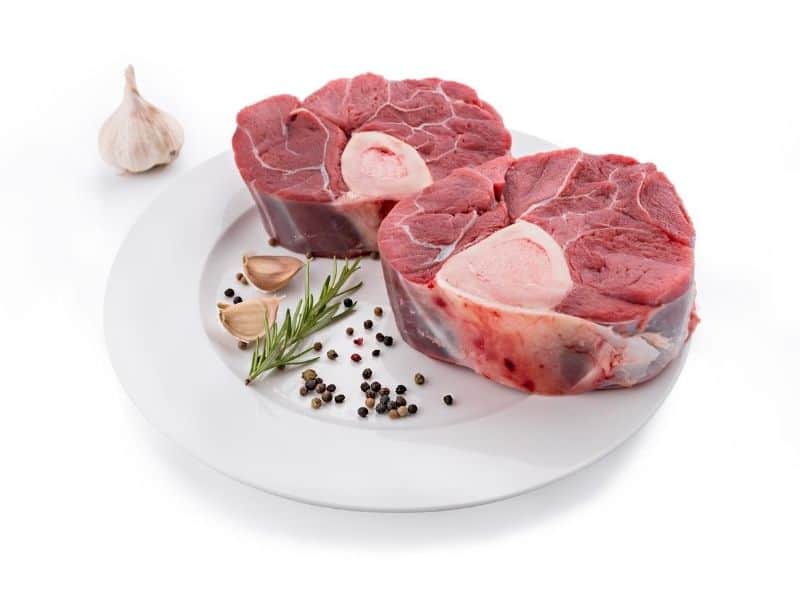
Osso buco comes from the beef shank. The key to preparing good osso buco is to braise it for a long time.
At least three hours will be needed to break down the sinew and the marrow from the inner bone. Most recipes call for it to be braised in red wine and beef stock.
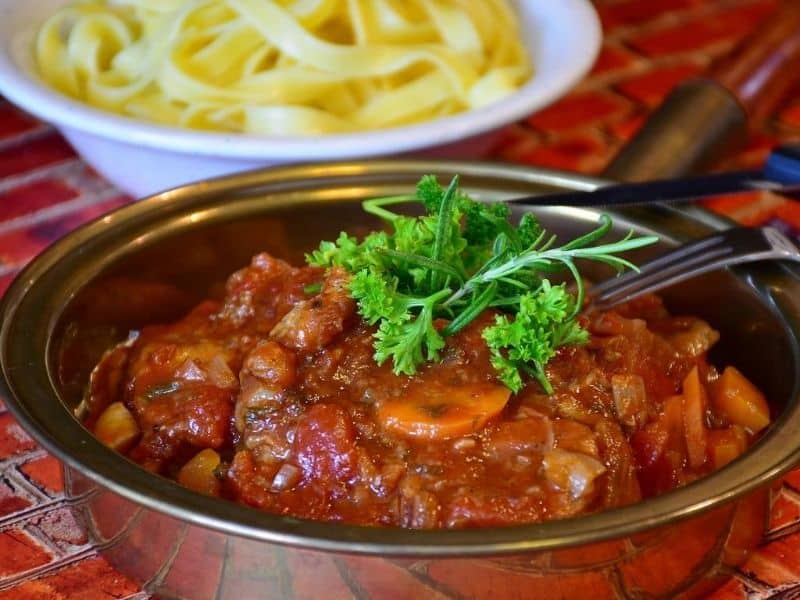
Want to try cooking some osso buco?
Here is a nice recipe that I can recommend.
Hindquarter Cuts
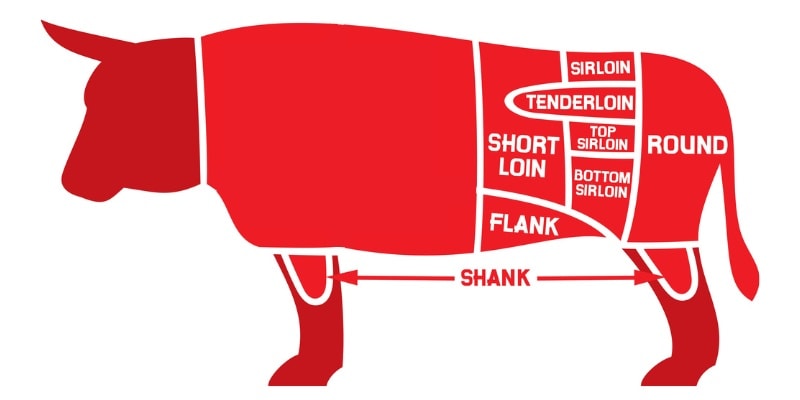
6. Beef Short Loin
Working back from the rib of the forequarter, the first cut is the short loin.
This cut is where some of the most popular retail cuts come from, like the New York strip, porterhouse, and T-bone steaks. Bone-in strip steaks and club steaks also come from the short loin.
These are tender cuts, and dry cooking is best.
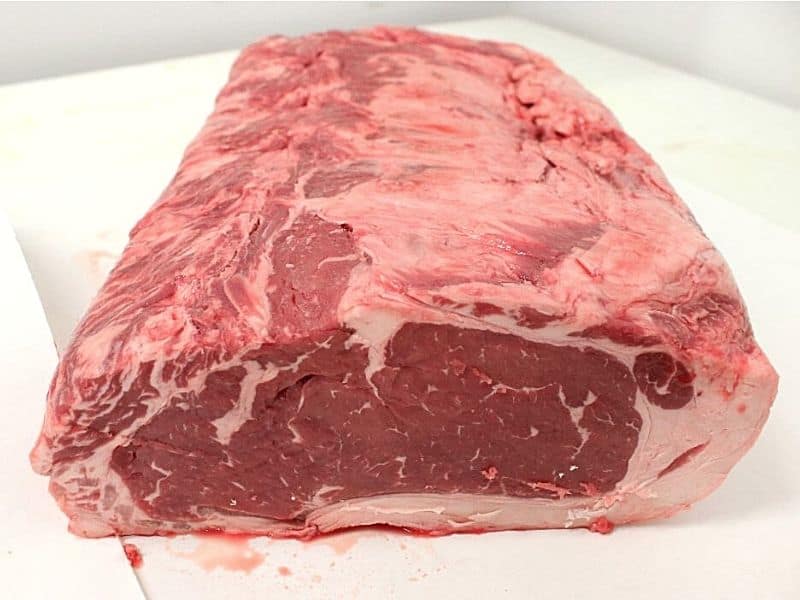
The T-bone steak is actual a two-in-one steak, with a bit of tenderloin separated from a bit of strip steak by the bone. It’s excellent on the grill or broiled, but the problem is that it cooks unevenly with two different sized and textured products in one.
Make sure to keep the tenderloin half farther away from the heat source to get each bit cooked to perfection.
7. Beef Sirloin
The sirloin runs from the last ribs to the hip bone, and it’s divided further into top sirloin and bottom sirloin. It’s basically the lower back.
The steaks made from the sirloin are perfect for grilling.
A cross-section steak made from the sirloin is made of several different cuts, and therefore it may cook a bit unevenly.
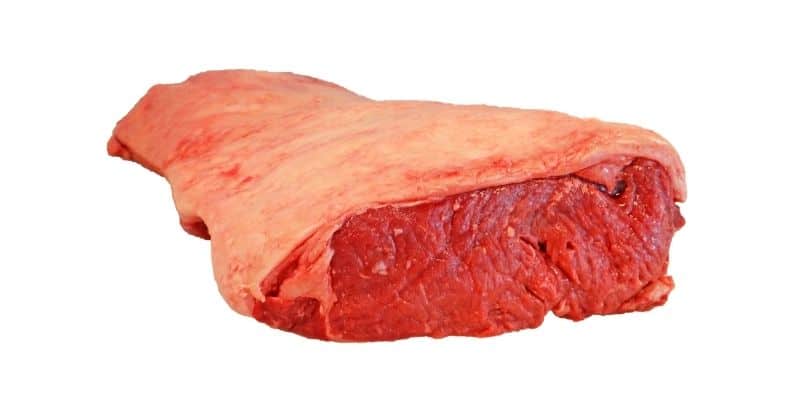
A popular cut from the bottom sirloin is the tri-tip or Newport steak. This steak is a triangular cut that is lean.
The traditional way to prepare it is to apply a dry rub and then sear it on both sides with high heat. You then finish it over indirect heat until it is medium or medium-rare.
It’s usually sliced thin for sandwiches or served on a plate with pasta, potatoes, or vegetables.

Bavette steak is another cut coming from the bottom sirloin (near the flank) and is excellent for grilling.
8. Beef Tenderloin
Tenderloin is where the most tender, most coveted, and most expensive cuts come from. Think filet mignon and chateaubriand.
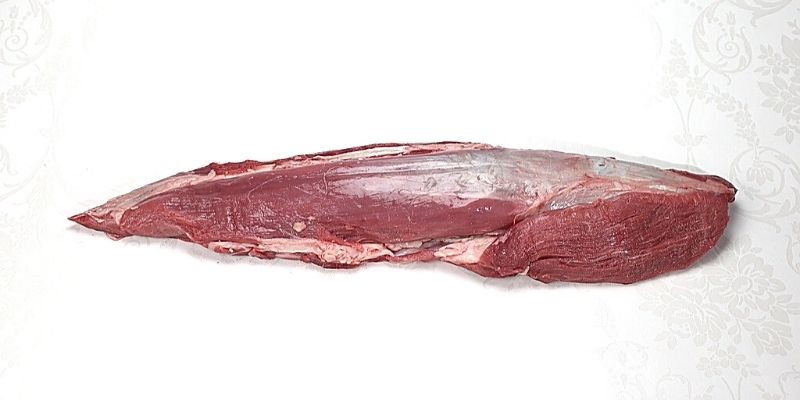
The tenderloin is situated inside other cuts, and how it gets divided depends upon the butcher. For example, the tenderloin runs forward and into the short loin, so if the butcher wants to cut T-bone steaks, they will include some tenderloin.
Being so tender, tenderloin is suitable for fast dry heat like pan-frying, grilling, or broiling.
To prepare a classic filet mignon, the cooking and seasoning are kept very simple since the cut is so delectable. It’s important to salt the steak before grilling or frying it. You can also add some freshly ground pepper if you wish to do so. Then just quickly sear it on each side and let it rest.
Chateaubriand is a little fancier. Most recipes call for it to be slow-roasted then heated quickly to add a little color. When shopping for pricey cuts like these, look for well-marbled cuts with an excellent distribution of fat.
9. Beef Flank
Under the short and sirloin primals, you will find the flank.
The flank is made of a pretty tough muscle group, so it can quickly become overcooked and become even tougher.

It is great grilled, but adding some moisture will help it not dry out. Marinating is a good idea, as is making thin cuts against the grain. Another fool-proof way to prepare it is by braising.
10. Beef Round
Beef round comes from the hind leg. It’s divided into the top and bottom round, and the knuckle.
London broil comes from the top round; the rump roast and eye of round come from the bottom round.
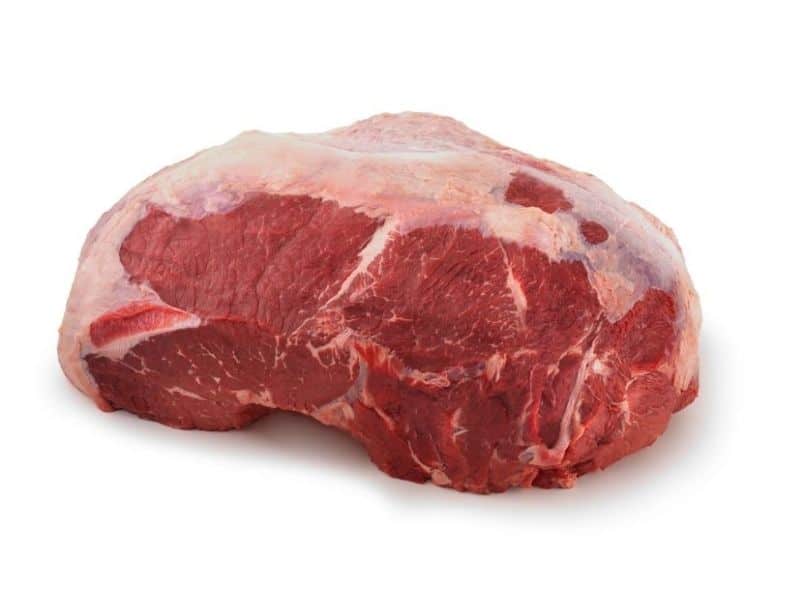
Round is a lean cut of meat, and it doesn’t contain enough collagen to make gelatin when braised. As a result, you can braise round, but it won’t be as flavorful as a chuck roast.
The better use is to roast it slowly and slice it thin for sandwiches.
Other Cuts
Ingredient Cuts
There are several things available in your market that are unidentifiable.
They are generally made of scraps by the butcher, and they’re used in things like burgers, stews, chilis, and soups where the exact cut of beef isn’t essential. They are beef that you can easily use as ingredients in other recipes, but it’s not made to be the star of the show.
Examples of ingredient cuts include kebabs, beef strips, ground beef, cubed steak, and stew meat. These are your go-to butcher packs when you’re looking for something inexpensive to make as part of a bigger recipe.
Ready to Cook Some Beef?
Once you dissect the terminology, the areas described in this beef cuts guide aren’t as complicated as they may seem. Knowing their origins and the best ways to cook them, you’ll impress your friends and neighbors with your culinary prowess in no time.
Pick the right cut to match your cooking technique, and the world’s best steak houses won’t have anything on you!
